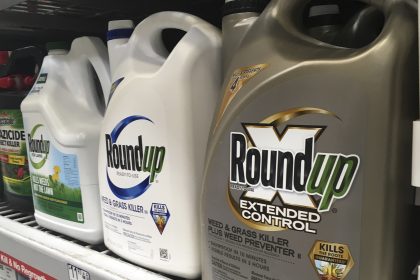Nitrate in Drinking Water May Increase Odds of Preterm Birth

A recent study from Stanford University indicates that nitrate in drinking water is associated with increased odds of spontaneous preterm birth.
“One single study does not conclusively prove that nitrate exposure causes preterm birth, but it is a clear indication that we should continue to investigate these links to inform evidence-based drinking water policy,” said researcher Allison Sherris, PhD candidate at Stanford University.
Nitrate is a widespread groundwater contaminant, and a leading cause of drinking water quality violations in California. Although nitrate is naturally occurring in nutrients in soils and is present in U.S. aquifers, there are sources which heighten nitrate in a water supply, such as agricultural runoff containing fertilizer and animal waste.
“Those who rely on private wells for drinking water may be particularly vulnerable to nitrate, as private wells are unregulated and often shallower than public supply wells,” said Sherris.
The U.S. established a way to regulate nitrate levels in drinking water through the Safe Drinking Water Act of 1991, which sets a federal maximum contaminant level for nitrate in drinking water, measured as nitrogen, which is equivalent to 10mg/L.
The 10mg/L federal maximum contaminant level for nitrate in drinking water was established to protect infants against what is known as blue baby syndrome, when the skin of a baby turns blue as the result of decreased amount of hemoglobin in the blood of the baby.
Prior to this study, Sherris and researchers relied on research which linked nitrate in drinking water exposure and blue baby syndrome to try to understand the reproductive and chronic health effects of nitrate.
Although blue baby syndrome is not deadly in many cases, studies show that is not the case for babies born prematurely, who often suffer from long-term health outcomes such as mental disability, cerebral palsy, visual and hearing impairments, poor growth, and behavioral problems.
Sherris said so few studies had examined gestational exposures to nitrate and risk of preterm births because assessing exposure to chemicals in drinking water is complicated.
“Water quality is dynamic, difficult to comprehensively measure at the tap, and often correlated to socioeconomic conditions. What’s more, water consumption behaviors are usually unobserved, and the window of risk is narrow. We were lucky to have access to a dataset that included multiple births to the same women over time and comparing risk between siblings helps address some of these challenges,” said Sherris.
The study links maternal and infant hospital discharge data from the Office of Statewide Health and Planning and Development and geocoding of the maternal residential addresses at the time of birth from the California Environmental Health Tracking Program Geocoding Service.
Researchers examined birth certificates of 6,267,905 live births delivered at nonmilitary hospitals in California from January 1, 2000 through December 31, 2011.
“A primary challenge in the use of birth certificate information is that we have access only to the mother’s addresses at the time of birth. She could have lived elsewhere at times during the pregnancy, visited elsewhere, and worked elsewhere, all of which could have affected her exposure status, making it more difficult to find a true association if one existed,” said Sherris.
To control for factors which influence preterm birth independently of nitrate exposure, such as socioeconomic status, the researchers compared health outcomes for each non-twin, sibling pair born from the same mother. That way if the woman moved between pregnancies, the researchers could examine how health outcomes in pregnancy changed based on exposure to a new water system.
“Luckily, high levels of nitrate, above the regulatory limit, were rare in the study population, at around 0.6%, though they are known to be much more common in domestic wells. But even nitrate concentrations below the regulatory limit were associated with an increase in odds of early spontaneous preterm birth in our study,” said Sherris.
California has made strides towards improving drinking water quality and addressing inequities in water vulnerability, dating back to the Safe Drinking Water and Toxic Enforcement Act of 1986, which protects drinking water sources from being contaminated with chemicals known to cause cancer, birth defects or other reproductive harm, and required businesses to inform Californians about exposure to such chemicals.
In 2012, Gov. Jerry Brown passed a law called the Human Right to Water, making California the first state in the nation to legislatively recognize the human right to clean, safe, and affordable drinking water.
In 2015, the California Environmental Protection Agency enlisted the Office of Environmental Health Hazard Assessment to develop a framework and tool to assess the human right to water, and a year later the State Water Resources Control Board provided funding to the Office of Environmental Health Hazard Assessment to develop the first Human Right to Water Framework and Data Tool, capable of quantitatively assessing the state’s progress in realizing the human right to water for all Californians.
This year, findings from the Human Right to Water Framework and Data Tool show that among the 2,839 community water systems California studied during 2011 to 2019, nearly three-fourths of the state’s community water systems (74%) had water quality scores showing relatively good overall water quality, with nearly one third of these systems showing no water quality issue in terms of the measured indicators.
However, the data also shows that 32% of the water systems had one contaminant with high potential exposure, and 9% had high potential exposure for two or more contaminants that were discovered, such as E. coli, arsenic, gross alpha, Lead, and nitrate.
When Gov. Gavin Newsom signed SB 200 in 2019, to provide more funding towards solving problems with water systems, especially those serving disadvantaged and rural communities, he promised to ensure “safe drinking water in every California community, for every Californian.”
However, the Stanford study shows that not all California communities may have equal access to safe drinking water, as Hispanic women were overrepresented among those with high levels of nitrate in drinking water that was above the regulatory limit.
“It’s yet another reminder of the inequities in environmental pollution, and the importance of ensuring that drinking water is safe and accessible for everyone,” said Sherris.
As Sherris continues researching nitrate exposure and its health effects to inform evidence-based drinking water policy, she said she hopes that future studies will focus on the health effects of nitrate concentrations below the current regulatory limit, to better assess whether this cutoff is protective of health.
“Preventing even a fraction of these births by identifying risk factors would have an enormous societal benefit,” said Sherris.


























